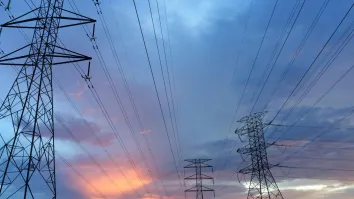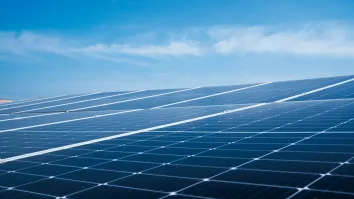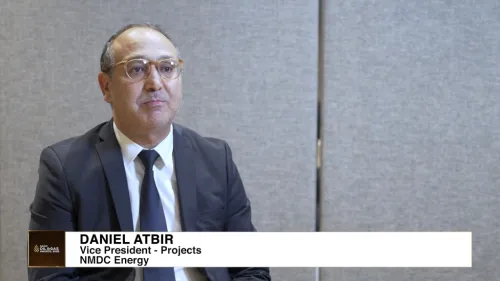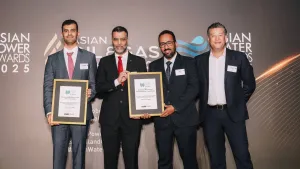Solar policy, programs, and progress in Southeast Asia: Current status and future outlook
By Matthew HelingWidely known to have vast solar potential, Southeast Asian countries have used a variety of methods to drive solar deployment in the last several years. However, the timing and efficacy of each country’s initiatives have varied considerably, leading to vastly different levels of historical solar growth. Thailand, for example, implemented pioneering programs years ago, generating a considerable number of solar projects, but currently provides very little support for new solar. Vietnam and Malaysia, on the other hand, have just recently ramped up their solar efforts, but are doing so with what appears to be considerable success.
Despite the differences in historical growth, solar is positioned for strong long-term growth across Southeast Asia, due to continually declining solar costs and the region’s vast solar resource and rapidly growing electricity needs. This article provides a brief history of solar in each Southeast Asian country and provides a country-by-country outlook into how solar is expected to grow and bring increasingly low-cost, secure electricity to the people of the region.
Thailand
Thailand has been a leader in solar support and deployment. Beginning with its “Adder” program in 2006, and subsequent Feed-in Tariff (FiT) program, Thailand spurred the installation of nearly 3 GW of solar PV to-date – more than all other SE Asian countries combined. However, Thailand’s current mechanism for supporting renewables – the auction-based “SPP Hybrid Firm” program – uniquely requires “firm” output and, has a limited quota, and is also open to other renewable technologies that tend to better fit the “firm” requirement (e.g., biomass). The program therefore represents a rather limited opportunity for “pure” solar PV.
More recently – and perhaps surprisingly – the Thai government announced that it will not procure any new solar (and wind) for the next five years, asserting that solar (and wind) put upward pressure on wholesale electricity rates. The announcement was likely also driven by the current overall overcapacity in Thailand’s power market, which will be further exacerbated with approximately 5 GW of new gas-fired plant capacity planned to come online in the next several years.
On the other hand, rooftop solar PV continues to grow. While individual system sizing is limited by the current lack of export compensation (i.e., compensation for solar output that exceeds onsite consumption), the Thai regulator has hinted that it may soon allow some level of export compensation for (at least) residential consumers. More details are expected in the revision of the Power Development Plan, anticipated to be released within the next several months.
Despite the current shift away from solar, the long-term outlook remains bright, thanks to Thailand’s (a) ambitious long-term solar targets, which are rumored to be increasing from 6 GW in 2036, to 17 GW in 2036; (b) historically strong support of renewables and correspondingly relatively well-developed renewables industry “ecosystem” and investment climate; and (c) increasing dependence on imported LNG, which may drive increased interest in solar, considering its energy security advantages and increasingly low cost. While increasing solar deployment will lead to some additional concerns about grid integration, this will likely be only a minor drag in a likely solar-friendly future.
Philippines
Like Thailand, the Philippines supported solar deployment from a relatively early stage, beginning with the Renewable Energy Act of 2008, which set direction for RE development with provisions for FiTs and a renewable portfolio standard (RPS), among others. A solar FiT with a quota of 500 MW was implemented in 2012 and was significantly oversubscribed, leading to over 800 MW of solar being installed by 2016 – some without FiT compensation.
The FiT has since been discontinued, and there is currently no replacement supporting program. However, still, some solar projects are able to obtain PSAs without subsidies, and rooftop solar is also seeing growth. RPS rules and supporting mechanisms are currently being established, which should help re-start the solar industry.
Despite the current solar policy logjam, the future looks relatively bright – with renewed and increasing interest in both rooftop and utility-scale solar, from both small developers and increasingly, major energy industry players.
Even absent solar support programs, solar progress is continuing to some degree (e.g., unsubsidized solar PSAs), and companies such as Solar Philippines have grand visions for deploying solar PV combined with battery storage via PSAs even in the near term. Furthermore, implementation of the new RPS rules, which will require overall RE share to be at least 30%, should ultimately drive future growth even if their near-term impact is small. There is risk that current long-term programs may be adjusted by the subsequent government (to be elected in 2022), and there may well be pushback from distribution utilities and grid operators as the quantity of solar increases, but overall there appear to be more forces driving solar forward than holding it back – at least, in the longer-term.
Vietnam
Solar was not a significant part of Vietnam’s power sector until recently, when Vietnam announced a solar FiT in 2017 at a price level (USD $0.09/kWh) that was clearly attractive to developers, and produced a development pipeline of multiple GW. However, Vietnam’s standard solar power purchase agreement (PPA) has been deemed “unbankable” by international financial institutions, requiring developers to primarily pursue local corporate financing option. In response, the Vietnamese government is reportedly considering adjustments to the PPA and is investigating introducing an auction mechanism for new solar capacity beginning in 2019. However, the timing of any subsequent program is not yet known. Other concerns include the short timeline allowed for project development under the current FIT, as well as the processes and approvals required for systems > 50 MW, which are under federal jurisdiction. As a result, most projects moving forward are sized < 50 MW, therefore requiring only approval of provincial authorities.
The outlook for solar in Vietnam is strong, considering Vietnam’s (a) relatively strong solar resource, especially in the south; (b) massive current pipeline; and (c) current government target of 12 GW solar by 2030. Headwinds include the current PPA terms, some concern about EVN as an off-taker, implications of Vietnam’s transition to a wholesale generation market, and ability to integrate such large amounts of intermittent generation. But despite these challenges, solar is expected to continue to grow in Vietnam.
Malaysia
Like Vietnam, Malaysia has been a late-comer to solar, but has seen strong growth recently. The majority of this growth has been enabled by Malaysia’s Large Scale Solar program – an auction program that has a target of 1 GW by 2020, and has already procured some 900 MW. Malaysia also has various solar FiTs for systems < 1 MW, though this program’s quotas appear to be fully subscribed.
Malaysia’s solar auction program has generally been considered a success and lays the foundation for Malaysia to be a solar leader in the region in the years to come. While Malaysia is already on-track to meet its year-2020 solar targets, its longer-term target of approximately 9 GW by 2050 is expected to further drive growth.
Singapore
Abiding by free-market principles, Singapore has stayed away from direct subsidies for solar, but instead has supported solar primarily via research and development (e.g., by supporting the Solar Energy Research Institute of Singapore, or SERIS) and market enablement. Indeed, Sinhgapore’s solar export compensation program, and “SolarNova” program that aggregated solar demand across government facilities, have successfully driven total solar installation of approximately 100 MW by the end of 2017. Companies such as Sunseap have pioneered financed solutions that enable end-use customers to install rooftop solar with no (or low) down payment and reduce utility bills from “day one” relative to the buying power from the local utility.
Space limitations will always constrain Singapore’s ultimate potential for solar, but the city-state’s 2020 goal of 350 MW and longer-term goal of 1 GW suggest should lead to continued solar growth. Floating solar is seen as particularly promising, given Singapore’s land constraints, and there are several demonstration projects currently underway, including at SERIS’ floating solar test bed. More broadly, Singapore’s continued support of solar research will continue to position Singapore as a regional industry leader.
Indonesia
Despite being the fourth-most-populous country in the world, and having a relatively sun-soaked geography, solar has not been a priority in Indonesia, and progress has lagged behind that of other countries. The country has only a handful of grid-connected systems, with combined capacity of less than 100 MW. Regulation 50 of 2017 allows solar (and other renewables), but sets the maximum FiT rate as either (a) the local grid rate, if the local grid rate is less than the national average; or (b) the national grid rate, if the local grid rate is more than the national average (however, negotiation is allowed). Generally, this policy is seen as unfavorable for renewables, because the grid rate is often based on the cost of existing coal-fired generation.
Off-grid hybrid solar applications (i.e., solar coupled with engines or batteries) are attractive options, but deployment of such systems has been limited to-date, due to the historically high investment cost of solar PV. There is now a growing interest among local developers specializing in off-grid, hybrid projects of various technology combinations.
The outlook for solar in the long term in Indonesia is promising in theory, with an official target of 7,000 MW by 2026. However, the situation is murkier in practice, due to lack of clear solar goals, support, and enabling mechanisms by the government. While the physical potential for solar is very high, practical considerations such as compensation mechanisms, competition with conventional power sources (e.g., coal), proximity of good solar sites relative to load centers, and complicated local permitting and interconnection processes, will likely continue to weigh down solar growth, at least in the near term.
Brunei, Cambodia, Laos, and Myanmar
The remaining SE Asia countries have not yet established significant solar programs or otherwise seen or supported significant solar growth, and have a combined solar capacity of approximately 10 MW as of the end of 2017. The few projects that have come online have been the result of “one-off” bilateral negotiations. While there are a few massive projects in various stages of development, including several 200+ MW each, whether these ultimately become constructed is uncertain.
Some of these countries have renewables goals that could, in the long-term, drive significant solar growth (e.g. Laos: 106 MW by 2025; Myanmar: wind+solar up to 2.3 GW by 2030). However, challenges associated with (a) relatively weak grids and associated integration challenges; (b) prioritization of other energy technologies (e.g., hydro in Laos, coal and gas in the other countries); and (c) lack of supporting programs and processes, will constrain future solar growth to some degree. On the other hand, the drive for increased electrification in many of these countries represents a significant opportunity for hybrid systems, at least in theory. And as is the case elsewhere, as solar costs continue to decline, solar will become an increasingly attractive option relative to conventional plants.
Conclusions
Solar has grown at different rates in the various SE Asia countries for a variety of reasons, but primarily in response to supportive government programs – or lack thereof. Going forward, as solar costs continue to decline, and considering solar energy’s security benefits, support for solar should continue to increase across the region. Barriers to more-rapid development include the need to (a) develop and successfully implement programs to drive costs as low as possible (e.g., auctions); (b) further streamline project development processes and permitting requirements; and (c) in the longer term, cost-effectively integrate solar’s intermittent output into electricity grids. However, with increasing solar experience in the region – and around the world – those challenges appear to be minor relative to the enormous benefits that solar can bring to the region.




















 Advertise
Advertise







